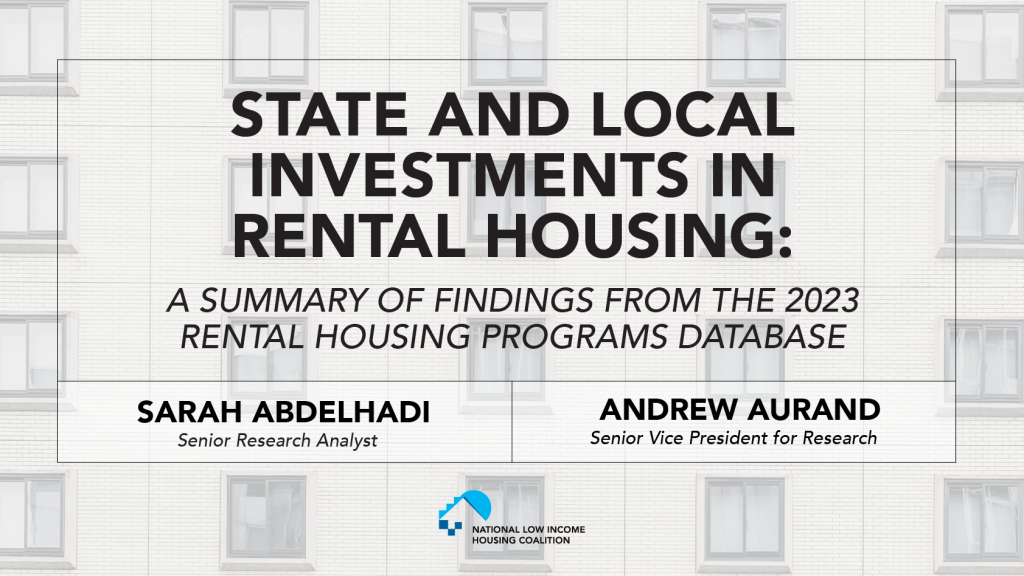With support from the Center on Budget and Policy Priorities (CBPP), NLIHC has released an update to the Rental Housing Programs Database (RHPD) and an accompanying report to give policymakers, researchers, and housing advocates greater insight into the growing number of state and local programs that promote affordable housing. The new resources are available here.
The information in the RHPD is invaluable and sorely needed: renter incomes continue to lag far behind rising housing costs, forcing over 20 million U.S. households to pay over half of their income in rent and leaving more than 582,000 people homeless. Because limited federal funding has meant that only one in four eligible renter households receive long-term federal housing assistance, many extremely low-income (ELI) renters with incomes below the federal poverty level or less than 30% of their area median income (AMI) must rely on other sources of support to secure affordable housing, or face the harsh reality of forgoing other necessities or emergency expenses to make rent.
Given this gap in federal assistance, many states and localities have funded their own programs that create, preserve, or increase access to affordable rental housing. The 2023 RHPD identified a total of 353 rental housing programs as of August 2023 across 48 states, the District of Columbia, and 41 of the largest U.S. cities. (See map.)

The RHPD focuses on programs that provide rental assistance, capital funding for affordable housing development, and tax relief to renters. It also includes programs funded in whole or in part by the Coronavirus State and Local Fiscal Recovery Funds (SLFRF) program, a federal initiative designed to fund state and local responses to pandemic-era disruptions, with an eye toward programs that address long-standing, systemic problems such as the affordable housing crisis. Users can explore the interactive database and download the data to learn more about program objectives, eligibility requirements, logistics, funding, and other characteristics.
The corresponding report, State and Local Investments in Rental Housing: A Summary of Findings from the 2023 Rental Housing Programs Database, details key findings from the updated database. The report finds, for example, that over half of rental housing programs identified provide capital for the construction, purchase, or rehabilitation of rental housing properties. Two-thirds of these programs require funded properties to remain affordable for 20 years or longer.
The report also notes that most rental assistance programs target lower-income renters and persons experiencing or at risk of homelessness. Tenant-based rental assistance programs, which account for the vast majority of rental assistance programs, tend to provide shorter-term assistance than project-based rental assistance programs, most of which support tenants for two years or more.
Among tax relief programs, 40% require applicants to have an annual income at or below $35,000. The majority of tax relief programs (70%) prioritize elderly renters and nearly half (48%) target renters with disabilities.
The report reveals that many state and locally funded rental housing programs (roughly 40%) are supported through general revenue – such as annual or biennial appropriations from a state legislature or city council – while nearly a fifth utilize special one-time funding, often related to pandemic recovery. The uncertain nature of these funds can make it difficult to sustain effective rental housing programs in the long term.
Together, the Rental Housing Programs Database and accompanying report provide housing advocates, researchers, and policymakers with invaluable information about the ways state and local governments are trying to make rental housing more affordable and accessible.
But don’t just take our word for it – check out the new resources yourself at: https://nlihc.org/rental-programs


Leave a comment